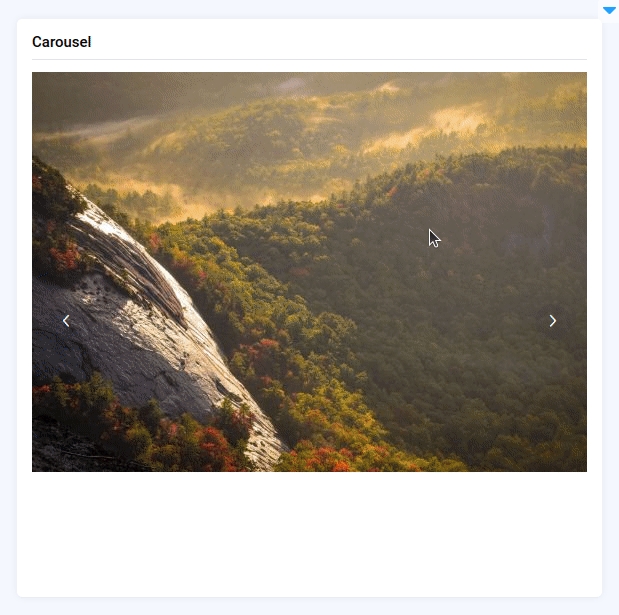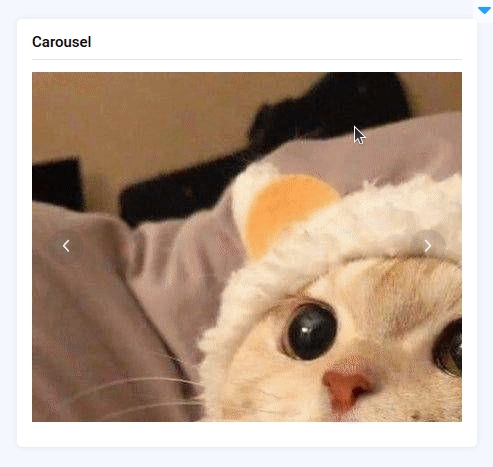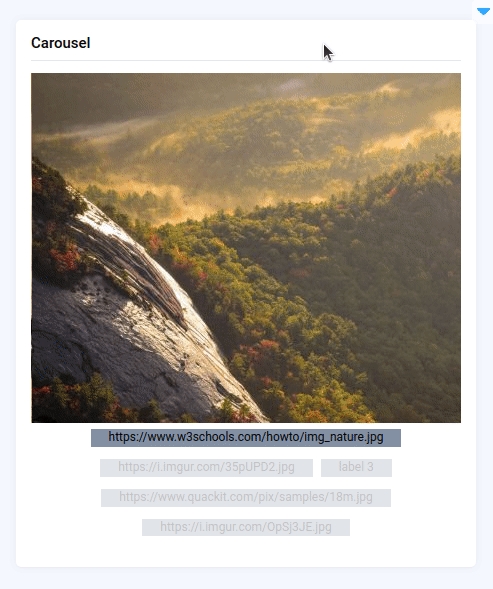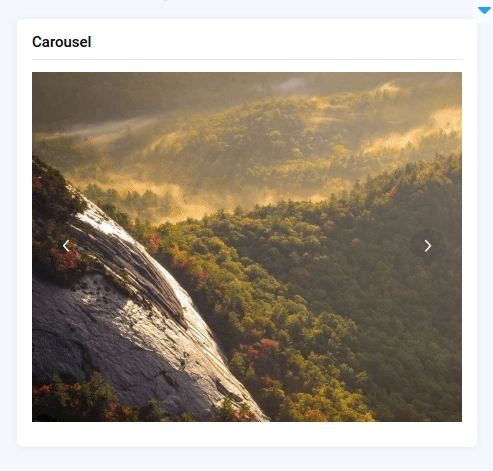Carousel
Introduction
Carousel is a widget in Supervisely that allows loop a series of images or texts in a limited space on the UI.
Function signature
Carousel(
items: List[Carousel.Item],
height=150,
initial_index=0,
trigger="hover",
autoplay=True,
interval=3000,
indicator_position="none",
arrow="hover",
type=None,
widget_id=None,
)Example of input data we will use.
# Example of local image
image_id = 22683828
static = os.path.join(sly.app.get_data_dir(), "static")
api.image.download_path(image_id, os.path.join(static, "image.jpg"))
items = [
Carousel.Item(name="Slide 1", label="https://www.w3schools.com/howto/img_nature.jpg"), # image by URL
Carousel.Item(name="Slide 2", label=f"{os.path.join('static', 'image.jpg')}"), # image from local directory
Carousel.Item(name="Slide 3", label="Lorem ipsum dolor sit amet", is_link=False), # text
Carousel.Item(name="Slide 4", label="https://www.quackit.com/pix/samples/18m.jpg"),
Carousel.Item(name="Slide 5", label="https://i.imgur.com/OpSj3JE.jpg"),
]
carousel = Carousel(items=items)Parameters
items
List[Carousel.Item]
Input Carousel data
height
int
Height of the Carousel
initial_index
int
Index of the initially active slide (starting from 0)
trigger
Literal["hover", "click"]
How indicators are triggered
autoplay
bool
Whether automatically loop the slides
interval
int
Interval of the auto loop, in milliseconds
indicator_position
Union[Literal["outside", "none"], None]
Position of the indicators
arrow
Literal["always", "hover", "never"]
When arrows are shown
type
Union[Literal["card"], None]
Type of the Carousel
widget_id
str
ID of the widget
items
Determine input Carousel widget data.
type: List[Carousel.Item]
height
Determine height of the Carousel widget.
type: int
default value: 350

initial_index
Index of the initially active slide (starting from 0).
type: int
default value: 0
trigger
Determine how indicators are triggered.
type: Literal["hover", "click"]
default value: "click"
autoplay
Determine whether automatically loop the slides.
type: bool
default value: False
interval
Determine interval of the auto loop, in milliseconds.
type: int
default value: 3000

indicator_position
Determine position of the indicators.
type: Literal["outside", "none"]
default value: "none"

arrow
Determine when arrows are shown.
type: Literal["always", "hover", "never"]
default value: "hover"

type
Determine type of the Carousel.
type: Union[Literal["card"], None]
default value: None

Methods and attributes
get_active_item()
Return Carousel selected index.
get_items()
Return Carousel items.
set_items(value: List[Carousel.Item])
Set Carousel items.
add_items(value: List[Carousel.Item])
Add items in Carousel.
set_height()
Set Carousel height.
get_initial_index()
Return Carousel initial_index value.
set_initial_index()
Set Carousel initial_index value.
@value_changed
Decorator function to handle selected value change.
Mini App Example
You can find this example in our Github repository:
supervisely-ecosystem/ui-widgets-demos/media/012_carousel/src/main.py
Import libraries
Init API client
First, we load environment variables with credentials and init API for communicating with Supervisely Instance:
Prepare items for cascader
You can use images from local directory or image URL.
Initialize Carousel and Text widgets
Carousel and Text widgetsCreate app layout
Prepare a layout for app using Card widget with the content parameter.
Create app using layout
Create an app object with layout parameter.
Add functions to control widgets from python code
Last updated
Was this helpful?